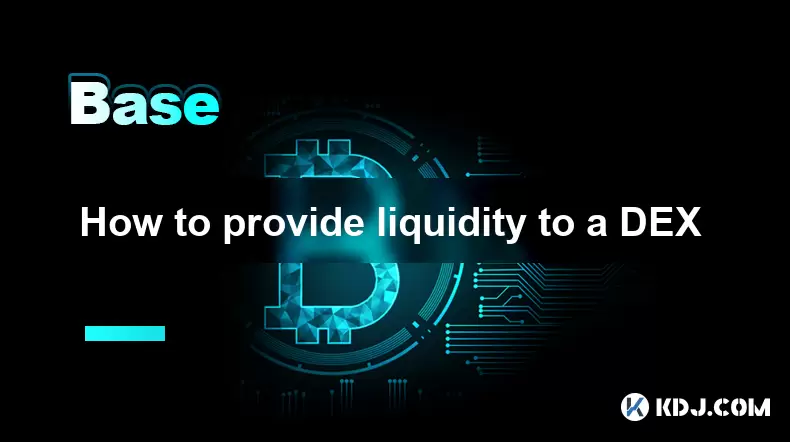-
 Bitcoin
Bitcoin $118,841.1054
1.02% -
 Ethereum
Ethereum $3,364.2689
7.44% -
 XRP
XRP $3.0337
3.93% -
 Tether USDt
Tether USDt $1.0004
0.04% -
 BNB
BNB $708.2059
2.49% -
 Solana
Solana $173.2385
5.74% -
 USDC
USDC $0.9999
-0.01% -
 Dogecoin
Dogecoin $0.2121
6.85% -
 TRON
TRON $0.3090
2.81% -
 Cardano
Cardano $0.7628
2.25% -
 Hyperliquid
Hyperliquid $46.8391
-2.08% -
 Stellar
Stellar $0.4537
0.15% -
 Sui
Sui $3.9529
-2.88% -
 Chainlink
Chainlink $16.6414
3.72% -
 Hedera
Hedera $0.2354
1.52% -
 Bitcoin Cash
Bitcoin Cash $499.1285
0.43% -
 Avalanche
Avalanche $22.6400
0.57% -
 Shiba Inu
Shiba Inu $0.0...01438
4.88% -
 UNUS SED LEO
UNUS SED LEO $8.8507
-0.64% -
 Toncoin
Toncoin $3.1498
2.35% -
 Litecoin
Litecoin $97.4954
1.21% -
 Polkadot
Polkadot $4.1541
1.50% -
 Monero
Monero $331.4406
-1.03% -
 Pepe
Pepe $0.0...01350
5.24% -
 Uniswap
Uniswap $8.9103
-5.01% -
 Bitget Token
Bitget Token $4.7540
4.51% -
 Dai
Dai $0.9999
-0.02% -
 Ethena USDe
Ethena USDe $1.0008
0.00% -
 Aave
Aave $322.3328
-1.63% -
 Bittensor
Bittensor $431.8026
-0.50%
How to provide liquidity to a DEX
Liquidity providers earn fees by depositing assets into DEX pools, enabling seamless trading via AMMs.
Jul 17, 2025 at 07:56 am

Understanding the Concept of Liquidity Provision in Decentralized Exchanges
Providing liquidity to a Decentralized Exchange (DEX) means contributing your cryptocurrency assets to a shared pool that enables traders to buy and sell tokens without relying on a centralized intermediary. In return for this service, liquidity providers (LPs) earn a portion of the trading fees generated by the DEX. This process is central to how Automated Market Makers (AMMs) function, which are the most common type of DEX today.
The core idea behind AMMs is that they use mathematical formulas to price assets rather than order books like traditional exchanges. When you add liquidity, you're essentially depositing two tokens into a liquidity pool in a specific ratio. The most common pairings involve stablecoins like USDT or USDC with other cryptocurrencies such as ETH or SOL.
Selecting the Right DEX Platform
Before providing liquidity, it’s essential to choose a DEX platform that aligns with your goals and risk tolerance. Popular options include Uniswap, SushiSwap, Balancer, and Curve Finance on Ethereum, as well as Raydium or Orca on Solana. Each platform has unique features, fee structures, and supported blockchains.
- Supported Assets: Ensure the DEX supports the token pairs you want to provide liquidity for.
- Fees and Rewards: Some platforms offer additional incentives like yield farming rewards or governance tokens.
- Security Audits: Check if the protocol has been audited and has a track record of secure operations.
It's also important to consider the blockchain network you're interacting with. High gas fees on Ethereum might eat into your profits, while newer chains like Binance Smart Chain or Avalanche may offer lower costs but less liquidity depth.
Setting Up Your Wallet and Connecting to the DEX
To interact with a DEX, you'll need a non-custodial wallet such as MetaMask, Trust Wallet, or Phantom for Solana-based DEXes. These wallets allow you to securely sign transactions and manage your crypto assets without giving up control.
Steps to connect your wallet:
- Download and install the wallet extension or app.
- Create a new wallet or import an existing one using your recovery phrase.
- Add funds in the native chain token (e.g., ETH for Ethereum, SOL for Solana) to cover transaction fees.
- Visit the DEX website and click the “Connect Wallet” button.
- Select your wallet provider and authorize the connection.
Once connected, you can navigate to the “Pool” or “Liquidity” section of the DEX interface to begin adding funds.
Adding Liquidity to a Pool
After selecting the correct pool, you’ll need to deposit an equivalent value of both tokens in the pair. For example, if you’re adding ETH/DAI liquidity, you must have both ETH and DAI in your wallet.
Detailed steps:
- Navigate to the “Add Liquidity” option under the relevant pool.
- Select the token pair you want to contribute to.
- Enter the amount of one token; the system will automatically calculate the required amount of the second token based on the current price ratio.
- Review the deposit amounts and confirm the transaction in your wallet.
- Approve the token transfers if prompted.
- Confirm the final transaction to mint your liquidity provider (LP) tokens.
These LP tokens represent your share of the pool and are necessary for claiming your portion of fees and withdrawing your liquidity later.
Monitoring and Managing Your Liquidity Position
Once your liquidity is added, it’s not set-and-forget. You should actively monitor your position for changes in value and impermanent loss.
Key considerations:
- Impermanent Loss: This occurs when the price of your deposited assets changes compared to when you added them to the pool. It can result in a temporary loss if prices diverge significantly.
- Earnings Tracking: Most DEX interfaces show accumulated fees in real-time. You can claim these periodically or let them compound.
- Withdrawal Process: To exit, go to the “Remove Liquidity” section, specify the percentage of your share you wish to withdraw, and confirm the transaction.
You may also participate in yield farming programs where you stake your LP tokens to earn additional rewards, though this introduces further risks like smart contract vulnerabilities or reward token volatility.
Frequently Asked Questions
What happens if I remove my liquidity before collecting fees?
You retain all fees accrued during the time your liquidity was active in the pool. Upon withdrawal, your share of fees is calculated proportionally and returned along with your deposited assets.
Can I provide liquidity with just one token?
No, most AMMs require balanced deposits of both tokens in a pair. However, some platforms like Balancer allow customizable ratios, and others may support single-sided deposits via third-party wrappers.
Is there a minimum amount required to provide liquidity?
There’s typically no minimum, but very small deposits may not be economically viable due to gas fees and minimal returns.
How often should I check my liquidity position?
It's advisable to review your position at least once a week to monitor for significant price movements, accrued fees, or potential impermanent loss.
Disclaimer:info@kdj.com
The information provided is not trading advice. kdj.com does not assume any responsibility for any investments made based on the information provided in this article. Cryptocurrencies are highly volatile and it is highly recommended that you invest with caution after thorough research!
If you believe that the content used on this website infringes your copyright, please contact us immediately (info@kdj.com) and we will delete it promptly.
- Coinbase's 'Base App': Your All-in-One Crypto Hub?
- 2025-07-17 12:30:13
- Raydium, RAY Repurchase, and Circulation: A Solana Ecosystem Powerhouse
- 2025-07-17 12:30:13
- Bitcoin, Ethereum, Market Cap: Decoding the Crypto Buzz
- 2025-07-17 12:50:12
- Bitcoin Whale Wallets: Navigating the Tides of Crypto Fortunes
- 2025-07-17 13:00:12
- California Dreamin' Web3: Coinbase, Ripple, and the Golden State's Crypto Embrace
- 2025-07-17 10:30:12
- Navigating the Base Ecosystem: Investment Targets and Strategic Restructuring
- 2025-07-17 10:50:12
Related knowledge

What is the Bitcoin dominance index
Jul 12,2025 at 10:35pm
Understanding the Bitcoin Dominance IndexThe Bitcoin Dominance Index, often abbreviated as BTC.D, is a metric used to measure Bitcoin's market capital...

What is the Bitcoin dominance index
Jul 11,2025 at 04:29am
What is the Bitcoin Dominance Index?The Bitcoin Dominance Index is a metric used to gauge Bitcoin's market capitalization relative to the total market...

Can crypto be a hedge against inflation
Jul 14,2025 at 12:21am
Understanding the Concept of Hedging Against InflationInflation refers to the general increase in prices and fall in the purchasing value of money ove...

Can crypto be a hedge against inflation
Jul 12,2025 at 12:07pm
Understanding the Role of Blockchain in Decentralized Finance (DeFi)Blockchain technology serves as the backbone of decentralized finance, offering a ...

What are account abstraction wallets
Jul 13,2025 at 01:43am
Understanding the Concept of Account AbstractionAccount abstraction is a term frequently used in the Ethereum ecosystem, particularly within discussio...

What does "gas limit" vs "gas price" mean
Jul 13,2025 at 04:00am
Understanding the Basics of Gas in Blockchain TransactionsIn the Ethereum and other EVM-compatible blockchains, every transaction requires computation...

What is the Bitcoin dominance index
Jul 12,2025 at 10:35pm
Understanding the Bitcoin Dominance IndexThe Bitcoin Dominance Index, often abbreviated as BTC.D, is a metric used to measure Bitcoin's market capital...

What is the Bitcoin dominance index
Jul 11,2025 at 04:29am
What is the Bitcoin Dominance Index?The Bitcoin Dominance Index is a metric used to gauge Bitcoin's market capitalization relative to the total market...

Can crypto be a hedge against inflation
Jul 14,2025 at 12:21am
Understanding the Concept of Hedging Against InflationInflation refers to the general increase in prices and fall in the purchasing value of money ove...

Can crypto be a hedge against inflation
Jul 12,2025 at 12:07pm
Understanding the Role of Blockchain in Decentralized Finance (DeFi)Blockchain technology serves as the backbone of decentralized finance, offering a ...

What are account abstraction wallets
Jul 13,2025 at 01:43am
Understanding the Concept of Account AbstractionAccount abstraction is a term frequently used in the Ethereum ecosystem, particularly within discussio...

What does "gas limit" vs "gas price" mean
Jul 13,2025 at 04:00am
Understanding the Basics of Gas in Blockchain TransactionsIn the Ethereum and other EVM-compatible blockchains, every transaction requires computation...
See all articles

























































































